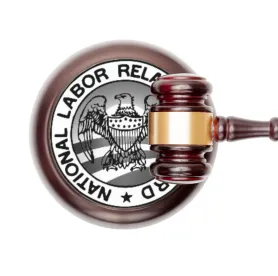The ability to form smaller bargaining units by breaking up larger aspects of an employer’s organization—sometimes called “micro-units”—is generally seen as an effort to enhance the ability of unions to gain entry into an employer by making it easier to organize. Those opposed to the practice, including both employers and trade groups, contend that carving out a small portion of an employer’s workforce into a bargaining unit fractures the workplace and thereby undermines both productivity and workers’ rights.
Whether a “micro-unit” is permissible under the National Labor Relations Act (“NLRA”)—like so much else in labor law during the last several years—depends on timing. Longstanding rules of bargaining unit make-up have changed drastically with the change of administrations.
In 2011, the Board lowered the bar for unions to organize smaller groups into bargaining units, notwithstanding decades of precedent to the contrary. In 2017, the Board restored the pre-2011 standard for evaluating the appropriateness of a petitioned-for bargaining unit. We have discussed these cases in detail here, here and here. On December 7, 2021, in American Steel Construction, 371 NLRB No. 41 (2021), the Board invited public input as to whether it should reconsider that standard once more and possibly revert back to the 2011 rule making it easier for unions to organize employees into micro-units. The Board’s recent request to the labor-relations community for amici briefing foreshadows that it likely will adopt the 2011 model that permitted “micro-units.”
Procedural History
Local 25, International Association of Bridge Structural, Ornamental, and Reinforcing Iron Workers, AFL-CIO, filed a petition on November 18, 2020, seeking to represent a bargaining unit composed of the full- and regular part-time journeymen and apprentice field ironworkers employed by American Steel Construction, Inc. Citing PCC Structurals, Inc., 365 NLRB No. 160 (2017), and The Boeing Company, 368 NLRB No. 67 (2019), the Region held that the community of interest shared among employees encompassed by the proposed unit was not sufficiently distinct from the interests of other employees excluded from the petitioned-for unit.
Accordingly, the Region agreed with the Employer that the petitioned-for unit was inappropriately narrow in scope, adding that the appropriate unit would include American Steel’s fabrication shop employees, painters, and drivers. Noting that the Union declined to represent that broader unit, the Region dismissed the petition.
The Board Majority’s Analysis and Request for Briefing
The Board noted that, prior to the decision in PCC Structurals, the Board’s Specialty Healthcare & Rehabilitation Center of Mobile opinion set out a more permissive standard for determining the appropriateness of a petitioned-for bargaining unit. 357 NLRB 934, 945-946 (2011), enfd. sub nom. Kindred Nursing Centers East, LLC v. NLRB, 727 F.3d 552 (6th Cir. 2013). The standard under Specialty Healthcare was whether the employees encompassed by a petitioned-for bargaining unit were readily identifiable as a group and shared a community of interest. Under that standard, whether the community of interest among included employees was meaningfully distinct from the interests of excluded employees who arguably might also belong in that group was irrelevant unless the employees of the broader potential unit shared an “overwhelming community of interest” with those in the petitioned-for unit.
The Board, in PCC Structurals, discarded that standard, explaining that when comparing the “shared and distinct interests of petitioned-for and excluded employees,” the key question is whether the excluded employees have “‘meaningfully distinct interests in the context of collective bargaining that outweigh similarities with unit members.’” 365 NLRB No. 160, slip op. at 9, 11 (quoting Constellation Brands U.S. Operations, Inc. v. NLRB, 842 F.3d 784, 794 (2d Cir. 2016)). Later, in Boeing, the Board noted that if the distinctions among excluded and included employees’ interests do not outweigh their similarities, the unit is not appropriate in scope. 368 NLRB No. 67, slip op. at 4.
In the instant decision, the Board found that the Union raised substantial issues warranting review of the Region’s determination that the petitioned-for unit was inappropriately narrow in scope. Accordingly, the Board granted review of the issue and invited both parties and amici to e-file briefs on or before January 21, 2022, regarding the following two questions:
-
Should the Board adhere to the standard in PCC Structurals, Inc., 365 NLRB No. 160 (2017), as revised in The Boeing Company, 368 NLRB No. 67 (2019)?
-
If not, what standard should replace it? Should the Board return to the standard in Specialty Healthcare, 357 NLRB 934 (2011), either in its entirety or with modifications?
The Dissenting View
Board Members Marvin Kaplan and John Ring criticized the majority opinion, observing that it ran contrary not just to existing precedent under PCC Structurals and Boeing, but also to the long-established precedent properly interpreting Section 9 that prevailed before the brief tenure of the aberrational Specialty Healthcare opinion.
The dissenting members criticized the Specialty Healthcare standard because it would mean that the Board would accept the petitioned-for unit as appropriate in “all but the rarest cases,” as it would require that the Board find appropriate any petitioned-for bargaining unit with an internal community of interest, except where the objecting party can meet the extraordinarily heavy burden of proving that excluded employees share an “overwhelming community of interest” with included employees.





 />i
/>i

